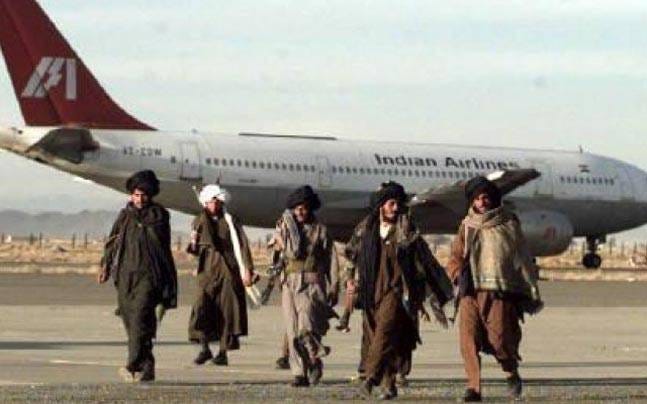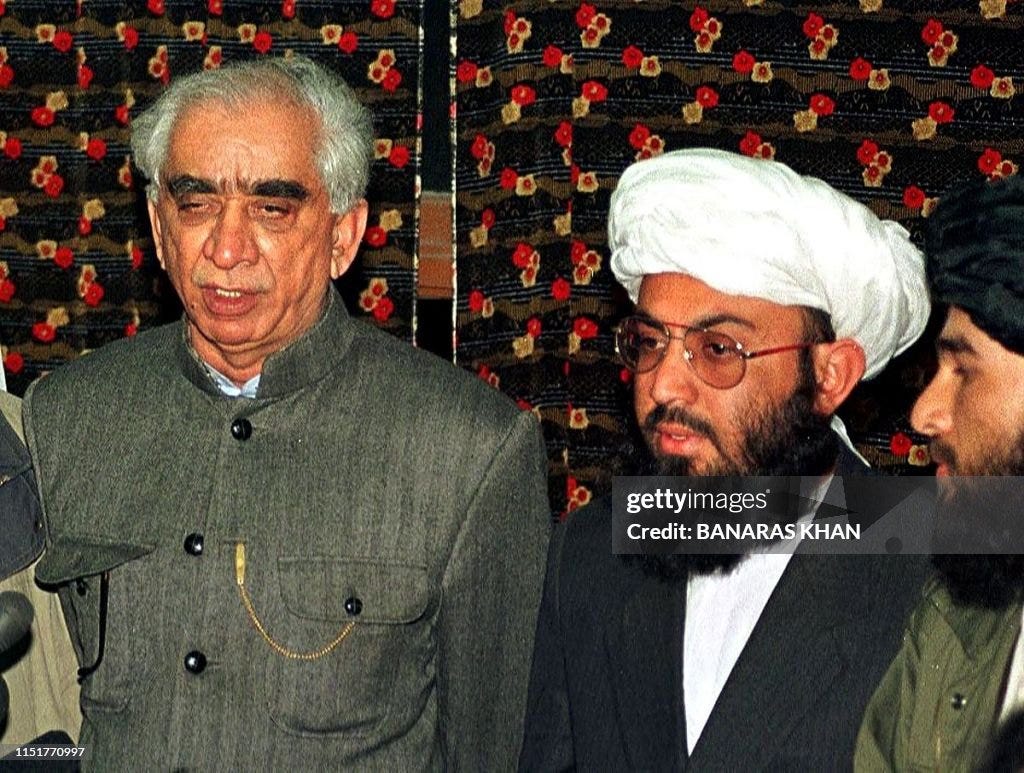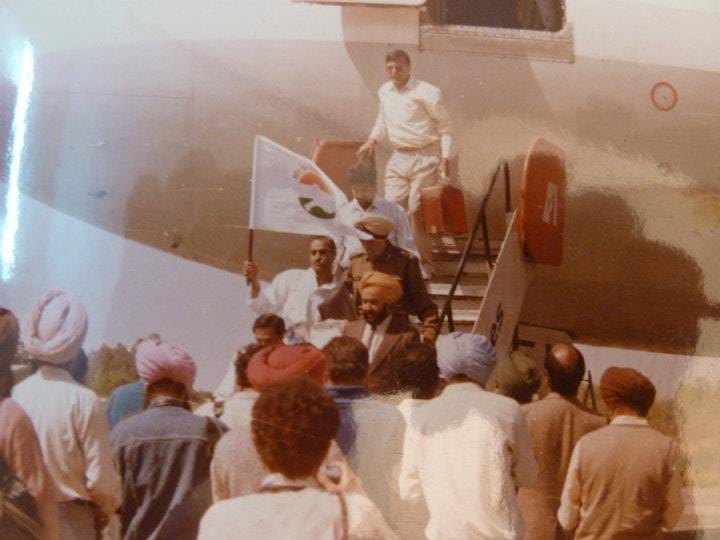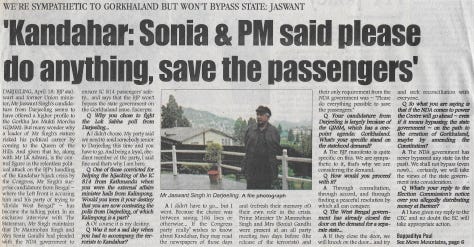IC-814 Hijacking to Kandahar: Unlearnt Lessons from the 1993 Twin Amritsar Hijackings
Despite the skillful negotiations that led to the rescue of all but one passenger, it would be naive to glorify this as a resounding success. In reality, it was a massive intelligence failure.

The IC-814 Hijacking: A Grim Reminder of India's Massive Security Lapse
The recent Netflix series on the hijacking of Indian Airlines flight IC-814 in 1999 has once again brought to the forefront a dark chapter in India's history. This event is arguably one of the most significant security breaches the nation has ever faced, resulting in a painful episode of international humiliation. The hijacking, orchestrated by ISI-trained and Pakistan-abetted terrorists, not only tested India's resolve but also exposed vulnerabilities in its security apparatus, highlighting the complexities of dealing with state-sponsored terrorism.

IC-814 Series: An Artistic Success Amidst Diverse Reactions
The Netflix series on the hijacking of IC-814 has received widespread acclaim from viewers across various professions, who have praised its technical and narrative handling of a sensitive topic. Noted journalist Nidhi Razdan, a Ramnath Goenka award winner who was just starting her career at NDTV during the incident, commended the series for its accuracy and compelling storytelling, despite pointing out minor inaccuracies, such as an unrealistic depiction of the newsroom and the lack of stubble on the captain after eight days. However, some viewers misunderstood the use of pseudonyms "Bhola" and "Shankar" for the Muslim hijackers, interpreting it as an attempt to defame Hindus, when it was actually a tactic used by the hijackers to hide their identities. Despite these mixed reactions, the series has been overwhelmingly praised for its gripping portrayal of one of India’s most harrowing events.
Summary of the Hijacking of Indian Airlines Flight IC-814
On December 24, 1999, Indian Airlines Flight IC-814, en route from Tribhuvan International Airport in Kathmandu, Nepal, to Indira Gandhi International Airport in Delhi, India, was hijacked by five masked men shortly after entering Indian airspace. The aircraft made several stops after the hijacking: first in Amritsar, India, for refueling, then in Lahore, Pakistan, after initially being denied permission, followed by a landing at Al Minhad Air Base in Dubai, UAE, and finally at Kandahar, Afghanistan, on December 25. The hijackers demanded the release of 36 prisoners and $200 million, but after seven days of negotiations, the demands were reduced to the release of three terrorists: Maulana Masood Azhar, Ahmed Omar Saeed Sheikh, and Mushtaq Ahmed Zargar.
Negotiations took place over seven days, with Indian officials including Vivek Katju, Ajit Doval, and CD Sahay involved in discussions with the hijackers. On December 31, Foreign Minister Jaswant Singh flew to Kandahar to oversee the exchange of the three terrorists for the remaining hostages. Despite efforts to persuade the Taliban to arrest the hijackers, the exchange went ahead as planned. All remaining hostages were released on December 31, bringing the week-long ordeal to an end. Tragically, one passenger, Rupin Katyal, was killed during the hijacking.

Reflecting on Hijacking Lessons from 1993: The Blunder at Amritsar
Reflecting on my four-year tenure as District Magistrate (Deputy Commissioner) of Amritsar in the early 1990s, my thoughts went back to the fateful April 1993, when, with just over eight years of service in the IAS, our team successfully handled two hijackings in a single calender month. In the first incident, we negotiated the surrender of the lone hijacker. The second incident was far more intense, involving a hijacker armed with two loaded Chinese pistols. For over 18 hours, we engaged with the hijacker until NSG commandos, flown in from Delhi, stormed the plane in the early morning hours, killing the hijacker without any other casualties, thus ending the dreadful ordeal.
While the specifics of these incidents are beyond the scope of this article, it is important to note that the lessons from these 1993 episodes were not adequately learned or applied by us as a nation, particularly by the ground team at Amritsar, in the 1999 incident. This oversight contributed to the tragic outcomes and international humiliation faced during the IC-814 hijacking, leading to an irreparable loss for the country.
The Costly Mistake in Amritsar: Lessons Unlearned from 1993
In my tweet, I expressed my frustration over the grave error made by the ground team at Amritsar during the IC-814 hijacking in 1999, which allowed the aircraft to take off again. During my tenure as District Magistrate in Amritsar in April 1993, as stated before, we had successfully resolved two hijacking incidents, firmly adhering to the principle that, under no circumstances, should a hijacked aircraft be permitted to take off again. This approach was based on two critical reasons: firstly, a hijacker is far more dangerous when in the air than on the ground, and secondly, once an aircraft leaves Indian airspace, we lose control over the situation as it enters foreign jurisdiction.
It is disappointing and alarming that these lessons were not heeded in 1999, leading to an irreparable loss for the nation. While some may argue that only one life was lost and that the other passengers returned safely, such a view overlooks the far-reaching consequences of releasing three notorious terrorists in exchange. The damage to our national security and international reputation was substantial, yet no one was held accountable for this failure. The complacency and lack of accountability are truly disheartening.
The Hefty Price of the IC-814 Hostage Release
While the release of the passengers on board Indian Airlines Flight IC-814 in 1999 may have been considered a success in the immediate aftermath, the long-term consequences of releasing three dangerous terrorists proved devastating for India. The individuals released in exchange for the hostages were Maulana Masood Azhar, Ahmed Omar Saeed Sheikh, and Mushtaq Ahmed Zargar—each of whom went on to perpetuate significant violence and terror across the globe, especially in India.
Maulana Masood Azhar, the founder of the Jaish-e-Mohammed (JeM) terrorist organisation, became one of the most notorious figures in global terrorism after his release. He masterminded several major terrorist attacks against India, including the 2001 attack on the Indian Parliament, the 2008 Mumbai attacks, the 2016 Pathankot attack, and the 2019 Pulwama attack. Ahmed Omar Saeed Sheikh, a British-born terrorist of Pakistani origin, played a key role in the kidnapping and murder of American journalist Daniel Pearl in 2002 and is alleged to have had a significant role in the 9/11 attacks in the USA. Mushtaq Ahmed Zargar, the founder of the Al-Umar Mujahideen terrorist group, continued his involvement in terrorist activities after his release. He had previously been involved in the 1989 kidnapping of Rubaiya Sayeed, the daughter of former Indian Home Minister Mufti Mohammad Sayeed.
These men, affiliated with Pakistan-based Islamist terror groups like Harkat-ul-Mujahideen (HuM) and Jaish-e-Mohammed (JeM), were released under immense pressure during the IC-814 negotiations. While the immediate outcome may have been the safe return of the passengers, the decision to release these terrorists came at a tremendous cost, leading to a series of deadly terrorist attacks that claimed many more lives and caused severe harm to India's national security and global standing. The aftermath of this decision underscores the heavy price India paid, demonstrating that the mission's perceived success was overshadowed by the grievous long-term damage inflicted by these released terrorists.
Post-Release Actions and Current Status of the IC-814 Terrorists
The three terrorists released in December 1999 in exchange for the IC-814 hostages continued to engage in significant terrorist activities, posing ongoing threats.
Maulana Masood Azhar, the founder of Jaish-e-Mohammed (JeM), allegedly orchestrated several major attacks against India and is currently believed to be living in Bahawalpur, Pakistan, under ISI protection. Ahmed Omar Saeed Sheikh, involved in the 2002 kidnapping and murder of Daniel Pearl and allegedly linked to the 9/11 attacks, is now imprisoned in Kot Lakhpat Jail, Lahore, Pakistan, after his death sentence was overturned in 2020. Mushtaq Ahmad Zargar, known for his role in the 1989 kidnapping of Rubaiya Sayeed, continues his involvement in terrorism and is thought to be residing in Muzaffarabad, Pakistan-Occupied Kashmir.
All three have remained active in terrorism following their release, underscoring the ongoing challenges in combating international terrorism and the heavy price India paid for their release.
Concluding Thoughts: Learning from Our Past to Secure Our Future
While we are not questioning the government's decision in 1999 to release the hostages from Flight IC-814, the critical error at Amritsar in allowing the hijacked aircraft to take off is inexcusable. Despite the skillful negotiations that led to the rescue of all but one passenger, it would be naive to glorify this as a resounding success. In reality, it was a massive intelligence failure. The terrorists released as part of the deal continued to wreak havoc in India and beyond, their activities unhindered even decades later. Our much-touted intelligence agencies have been unable to neutralise them, despite their known locations and movements being openly reported in the Pakistani press.
We live in a dangerous world where both state and non-state terrorist actors are becoming increasingly sophisticated. Even powerful nations like the USA and Israel have experienced severe intelligence lapses, as seen in the 9/11 attacks and the recent October 7th Hamas onslaught, respectively. As a nation, we must learn from our failures and those of others to enhance our security. This involves not only intelligence sharing with friendly countries but also improving coordination among various agencies within India, including those at the state level. Everyone, from the highest-ranking officials to the most modest police officer or airport worker, needs to be trained to remain vigilant.
Eternal Vigilance but No Paranoia
While no security system can be 100% foolproof, under the decisive leadership of Prime Minister Narendra Modi, India is well-positioned to strengthen its internal security mechanisms. This includes a thorough review of the performance of the country's internal and external intelligence agencies. We can feel relatively safe, but we must not allow ourselves to be lulled into a notion of a false sense of security.
Full credit goes to the creators of the Netflix series, especially the Director Anubhav Sinha, for reminding the nation of the gruesome IC-814 hijacking. However, it is crucial for us to learn and re-learn the lessons from the successful handling of the twin hijackings in Amritsar in 1993 and the notorious Kandahar episode of 1999. This event should not be glorified as a huge success or condemned as an utter failure. If we fail to learn from our mistakes, history has a tendency to repeat itself.





